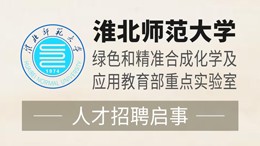Journal of Molecular Liquids ( IF 5.3 ) Pub Date : 2023-09-29 , DOI: 10.1016/j.molliq.2023.123206 Zhijie Shang , Pan Xu , Tongtong Feng , Xinxue Li
Ethylene glycol monobutyl ether (EGMBE) is a polar small molecule with amphiphilic characteristics, which can form various aggregates in aqueous solution. The solubility of EGMBE decreases as the temperature increasing with a lower critical solution temperature (LCST). The influence of temperature and salinity on aggregation behavior and solubility of EGMBE were thoroughly investigated in this paper. The phase transition temperatures of EGMBE aqueous solutions with different concentrations were determined and compared with literature. The completed phase diagram of the ternary system (water + NaCl + EGMBE) was constructed. The measured liquid-liquid equilibrium (LLE) data can be well fitted to the commonly used empirical equations Othmer–Tobias, Bancroft and Setschenow. The dynamic light scattering (DLS) measurement shows that the particle size of EGMBE aggregates increases with increasing concentration, reaching its maximum at EGMBE mass fraction of about 30%. Increasing temperature and inorganic salt concentration can both promote the increase of particle size, especially when approaching the phase separation point, the particle size increases sharply, and the corresponding viscosity of EGMBE solution abnormally increases with increasing temperature. The Tyndall effect of EGMBE solution was also observed to be most significant at mass fraction around 30%. It is interesting to note that the conductivity of EGMBE solution increases with increasing concentration, reaching its maximum value when the EGMBE mass fraction is about 30%, though EGMBE is not conductive. The Zeta potential also indicates that the aggregate has a negative value and decreases with increasing EGMBE concentration. The investigation of pyrene fluorescence probes and surface/interfacial tension also demonstrated the aggregation and surface adsorption of EGMBE.
中文翻译:

深入了解乙二醇单丁醚水溶液的聚集和相行为以及自组装诱导的光学和电学特性
乙二醇单丁醚(EGMBE)是一种具有两亲特性的极性小分子,在水溶液中可形成各种聚集体。EGMBE 的溶解度随温度升高而降低,临界溶解温度 (LCST) 较低。本文深入研究了温度和盐度对EGMBE聚集行为和溶解度的影响。测定了不同浓度EGMBE水溶液的相变温度并与文献进行比较。构建了三元体系(水+ NaCl + EGBE)的完整相图。测量的液-液平衡 (LLE) 数据可以很好地拟合常用的经验方程 Othmer-Tobias、Bancroft 和 Setschenow。动态光散射(DLS)测量表明,EGMBE聚集体的粒径随着浓度的增加而增大,在EGMBE质量分数约为30%时达到最大值。升高温度和无机盐浓度均能促进粒径增大,尤其是接近相分离点时,粒径急剧增大,相应的EGMBE溶液粘度随温度升高而异常增大。还观察到 EGMBE 溶液的廷德尔效应在质量分数约为 30% 时最显着。有趣的是,EGMBE 溶液的电导率随着浓度的增加而增加,当 EGMBE 质量分数约为 30% 时达到最大值,尽管 EGMBE 不导电。Zeta 电位还表明聚集体具有负值,并且随着 EGMBE 浓度的增加而降低。对芘荧光探针和表面/界面张力的研究也证明了EGMBE的聚集和表面吸附。






































 京公网安备 11010802027423号
京公网安备 11010802027423号